Phylum Nematoda – Webquest Notes
Part 2 of webquest:
Rather than me going through the notes and boring you, today you will be using this website to go over the notes, videos, and pictures at your own speed. You will gather notes through answering questions which gives you examples of questions I could ask on the simple invertebrates test while adapting my notes to fully address the question. Feel free to use other materials/videos to explore these phylum and help clarify if you need. If you would like me to check on any of your answers/diagrams, please let me know! Our first test will cover Phylum Porifera, Phylum Cnidaria, Phylum Platyhelminthes, and Phylum Nematoda.

Nematoda – “Thread” – Greek origin. Nematodes are the roundworms (Note: Earthworms are not roundworms!)
- Appeared ~400 million years ago (Still unclear – new research suggests much older)
- Are the most numerically abundant animals on Earth (and could be the most diverse – estimates ranging from 10000 to 1 million species – We really need to study them more…)

A: Evolution of Body Plan
1. Pseudocoelom – Nematodes (roundworms) are a bridge between “lower” and “higher” invertebrates.
- Lower – no coelom (body cavity)
- Higher – Coelom (body cavity)
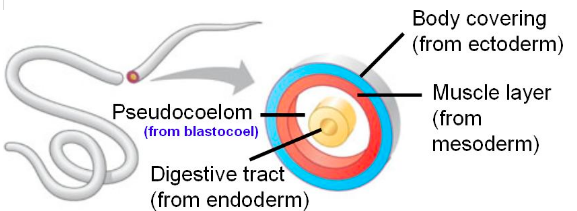
A pseudocoelom is a space between the mesoderm and the endoderm (not a true cavity – a true coelom will have a space within the mesoderm, not between cell layers)

2. Complete digestive system – One-way digestive system with a mouth and an anus. Simplest animal with this.
- Food can be digested step-by-step (more efficient)
- Waste removal does not interfere with eating.
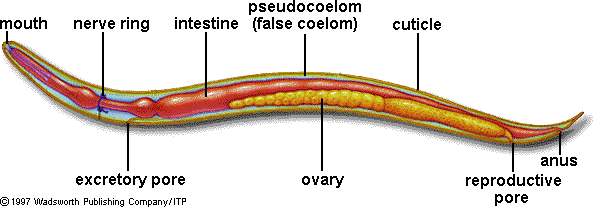
3. Bilateral Symmetry (with cephalization – similar to what developed in flatworms)
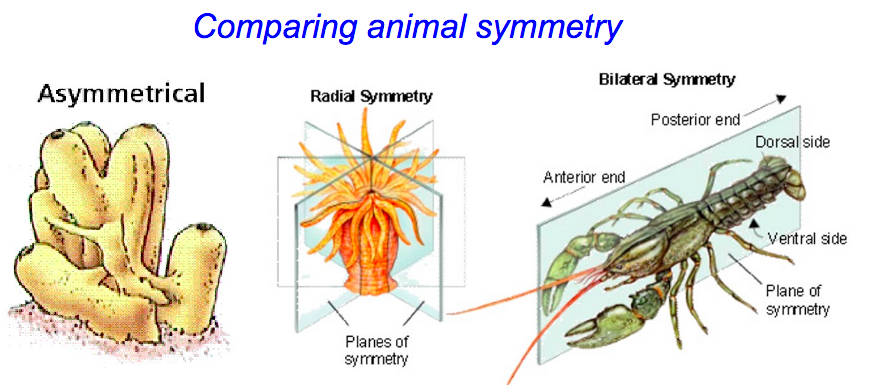
B. Feeding and Excretion
From advancement above:
Complete digestive system – One-way digestive system with a mouth and an anus. Simplest animal with this.
- Food can be digested step-by-step (more efficient)
- Waste removal does not interfere with eating.
Just like flatworms – two feeding styles are present:
Free-living Roundworms
- Carnivorous (feed on animals that are even smaller)or herbivorous (feeding on phytoplankton such as diatoms, algae and fungi)
- Can have teeth or spear-like structure to spear and suck out fluids of prey.
- Ex. P. pacificus or C. elegans (an important model organism!)
Parasitic Roundworms
-
- Get nutrients from a host – use one-way digestive system just like free-living roundworms.
- Many different methods of attachment/feeding – ex. Hookworms have cutting plates that grab onto the intestinal lining.
- Get nutrients from a host – use one-way digestive system just like free-living roundworms.

-
- Can be parasitic to humans, plants, or animals.

Excretion
- Excretory tubes transfer solid waste to anus.
- Waste (ammonia) is excreted through body wall with no associated organ.
C. Respiration and Circulation
No specialized organs for circulation and respiration (still nothing exciting…)
- Gas exchange occurs through diffusion (O2 in, CO2 out) through the skin.
D. Reproduction
Sexual Reproduction
- Most roundworms have two sexes (MOST ARE NO LONGER HERMAPHRODITES!)- male and female.
- Internal fertilization within the female body
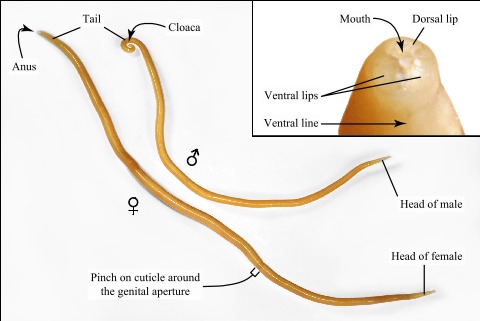
- Males are smaller with spicule that open the vulva of females for sperm transfer.
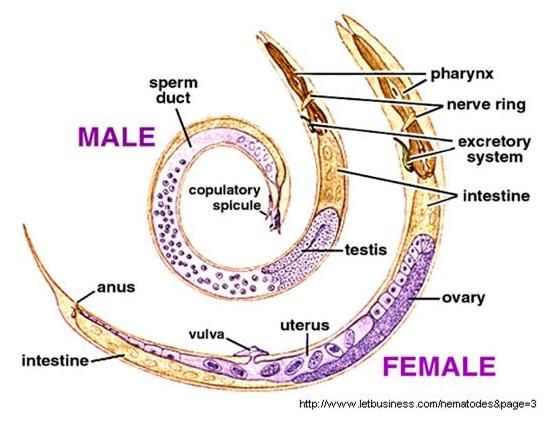

- Although some are hermaphrodites that self-fertilize
Attack of the parasites!
For the final part of the webquest lets get you moving! Please choose 3 parasitic nematodes to learn about. There are information posters scattered around the class. You are expected to know the basics: name of worm, disease caused and symptoms, and life cycle (basic). You will eventually choose of these for a research project focusing on the science behind and global cooperation for management of the disease.
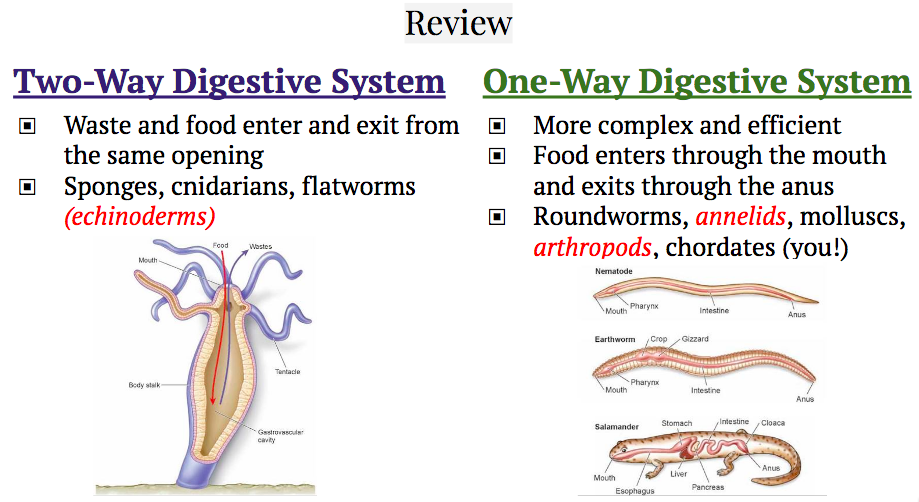
Comments by shaun pletsch